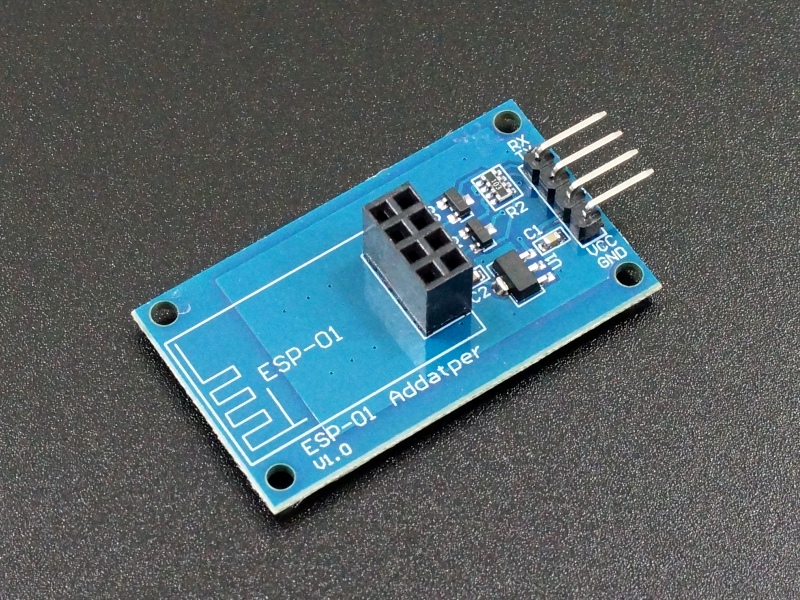johnny78
Full Member level 5

hi Guys
i've bought esp 01 long time ago but i couldnt test it & now im looking for some informations about it
some sites say it must work on 3.3v other tutorials says it works on arduino uno 5v signal level
im confused even my FTDI converter has switch to convert between 3.3 or 5v but when im testing with DVM its always 5.7v
this is the FTDI i have
https://www.okuelectronics.com/store/programmers/ft232rl-ftdi-usb-to-ttl-serial-module/
any good guide to start will be great
thanks
Johnny
FTDI FT232RL USB to TTL Serial Adapter Module 3.3V/5V Switch Selectable Logic Levels
so do you thinks i must power it from 3.3v & use just the signal of the FTDI?
https://www.alldatasheet.com/datasheet-pdf/pdf/1179098/ETC2/ESP-01.html
im more confused now
ةخقث ؤخىبع
https://forum.arduino.cc/t/connection-uno-with-esp01/1198688/11
i've bought esp 01 long time ago but i couldnt test it & now im looking for some informations about it
some sites say it must work on 3.3v other tutorials says it works on arduino uno 5v signal level
im confused even my FTDI converter has switch to convert between 3.3 or 5v but when im testing with DVM its always 5.7v
this is the FTDI i have
https://www.okuelectronics.com/store/programmers/ft232rl-ftdi-usb-to-ttl-serial-module/
any good guide to start will be great
thanks
Johnny
--- Updated ---
i ws checking the FTDI site & i see this infohi Guys
i've bought esp 01 long time ago but i couldnt test it & now im looking for some informations about it
some sites say it must work on 3.3v other tutorials says it works on arduino uno 5v signal level
im confused even my FTDI converter has switch to convert between 3.3 or 5v but when im testing with DVM its always 5.7v
this is the FTDI i have
https://www.okuelectronics.com/store/programmers/ft232rl-ftdi-usb-to-ttl-serial-module/
any good guide to start will be great
thanks
Johnny
FTDI FT232RL USB to TTL Serial Adapter Module 3.3V/5V Switch Selectable Logic Levels
so do you thinks i must power it from 3.3v & use just the signal of the FTDI?
--- Updated ---
the datasheet of the esp01 mentioned that it needs 80ma current which arduino uno 3.3v cant supply this currenthi Guys
i've bought esp 01 long time ago but i couldnt test it & now im looking for some informations about it
some sites say it must work on 3.3v other tutorials says it works on arduino uno 5v signal level
im confused even my FTDI converter has switch to convert between 3.3 or 5v but when im testing with DVM its always 5.7v
this is the FTDI i have
https://www.okuelectronics.com/store/programmers/ft232rl-ftdi-usb-to-ttl-serial-module/
any good guide to start will be great
thanks
Johnny
--- Updated ---
i ws checking the FTDI site & i see this info
FTDI FT232RL USB to TTL Serial Adapter Module 3.3V/5V Switch Selectable Logic Levels
so do you thinks i must power it from 3.3v & use just the signal of the FTDI?
https://www.alldatasheet.com/datasheet-pdf/pdf/1179098/ETC2/ESP-01.html
im more confused now
--- Updated ---
ةخقث ؤخىبع
more confusing articleshi Guys
i've bought esp 01 long time ago but i couldnt test it & now im looking for some informations about it
some sites say it must work on 3.3v other tutorials says it works on arduino uno 5v signal level
im confused even my FTDI converter has switch to convert between 3.3 or 5v but when im testing with DVM its always 5.7v
this is the FTDI i have
https://www.okuelectronics.com/store/programmers/ft232rl-ftdi-usb-to-ttl-serial-module/
any good guide to start will be great
thanks
Johnny
--- Updated ---
i ws checking the FTDI site & i see this info
FTDI FT232RL USB to TTL Serial Adapter Module 3.3V/5V Switch Selectable Logic Levels
so do you thinks i must power it from 3.3v & use just the signal of the FTDI?
--- Updated ---
the datasheet of the esp01 mentioned that it needs 80ma current which arduino uno 3.3v cant supply this current
https://www.alldatasheet.com/datasheet-pdf/pdf/1179098/ETC2/ESP-01.html
im more confused now
https://forum.arduino.cc/t/connection-uno-with-esp01/1198688/11
Last edited:



